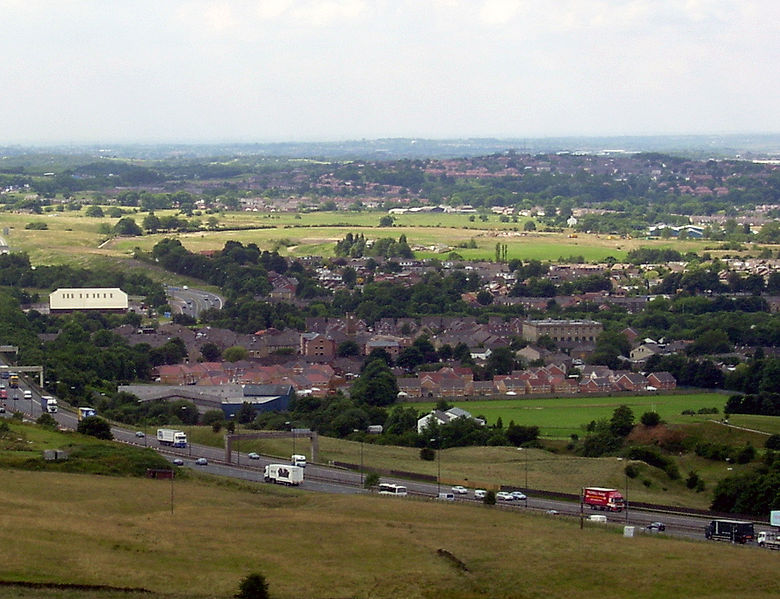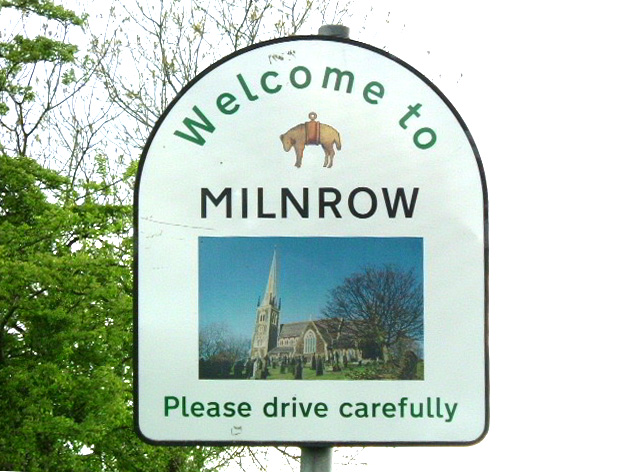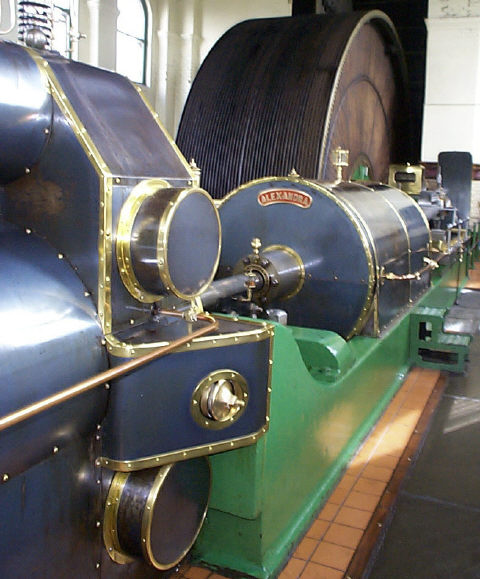 |
The District of Milnrow, Rochdale |
 |

|
|
Photo by Andrew Lee available under a Creative Commons licence |
 |
Milnrow is situated in south east Lancashire, at the foot of the Pennines, and just off junction 21 of the M62. Now part of Greater Manchester, it was once a Chapelry in the Township of Butterworth. Wool and the weaving of wool was an early and important trade, handloom weaver’s cottages can still be seen in the town, and the Council’s badge incorporates a sheep complete with fleece being weighed, to illustrate the importance of the woollen trade to the town. The town is believed to have derived its name however from an earlier occupation of corn milling, possibly from a corn mill at Mill Hill that is mentioned in a deed held by Edwin Butterworth, dated 1568.
The Reverend F R Raines, Vicar of Milnrow from 1832 to 1878, estimated that in 1715 the population was approximately 100 persons, certainly Milnrow Chapel at that time could only accommodate that number of people. One of the documents he found and rescued from the vestry contained the churchwarden’s estimate of 284 inhabitants in 1775. By 1861 the population of Milnrow was approximately 6000, a tremendous increase if the 1775 figure was accurate. Not all the entries in the early parish registers that have survived give father’s occupations, but those that do show that there were a great many weavers, plus allied occupations such as clothiers, combers, and fell mongers. There were also miners at Tunshill and masons at Stonepitfields.
 | |
The Industrial Revolution changed Milnrow, bringing first water powered woollen mills, then came steam power, and as the demand for wool increased so did the number of fell mongering yards. Thousands of sheep were slaughtered to provide the fleeces that the fell mongers stripped and blended for the mills. Coal mining became another important industry, there were collieries at Butterworth hall, Tunshill and Jubilee. Later in the 19th century cotton mills gradually replaced the woollen mills, By the early 1900’s cotton had become the major industry in Milnrow, until it too declined.
One of many mills at the time, the Ellenroad Cotton Mill was originally completed in 1892 and powered by two steam engines “Victoria” and “Alexandra”. It burnt down in 1916, was rebuilt in 1919 and then operated until 1975 when the steam engines were replaced by electricity. The Mill finally ceased production in 1982, stood derelict, then was later demolished. The Engine House however has since been fully restored and is now open to the public. The original engines can be seen in steam, and running a “Whitelees” beam engine, on the first Sunday of each month.
| Rochdale Home & Contents | ©Lancashire OnLine Parish Clerks | Lancashire Home |